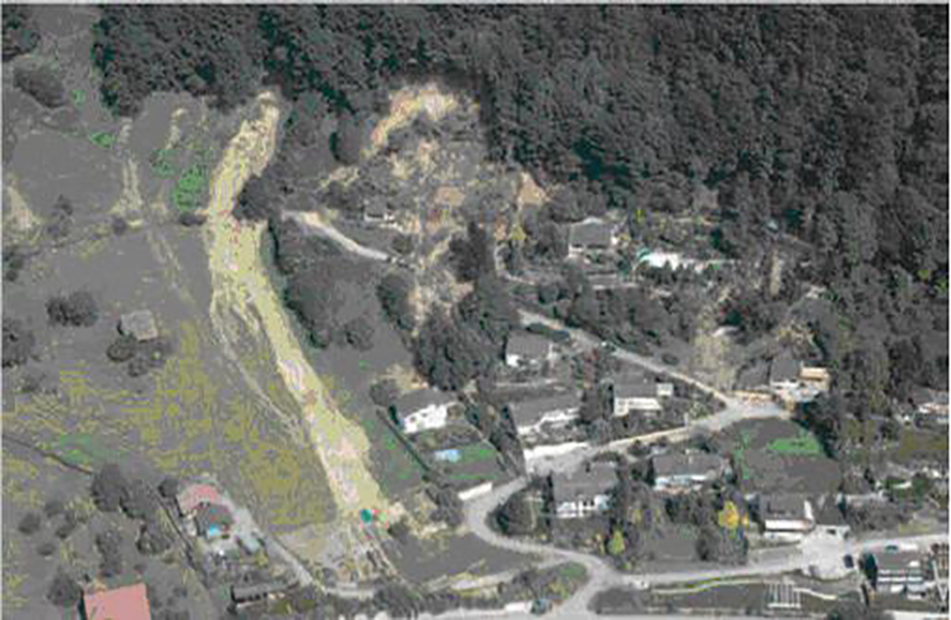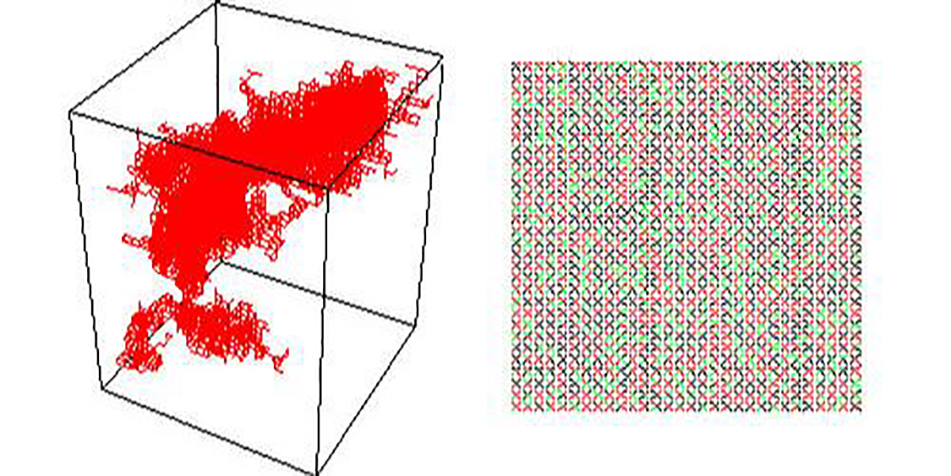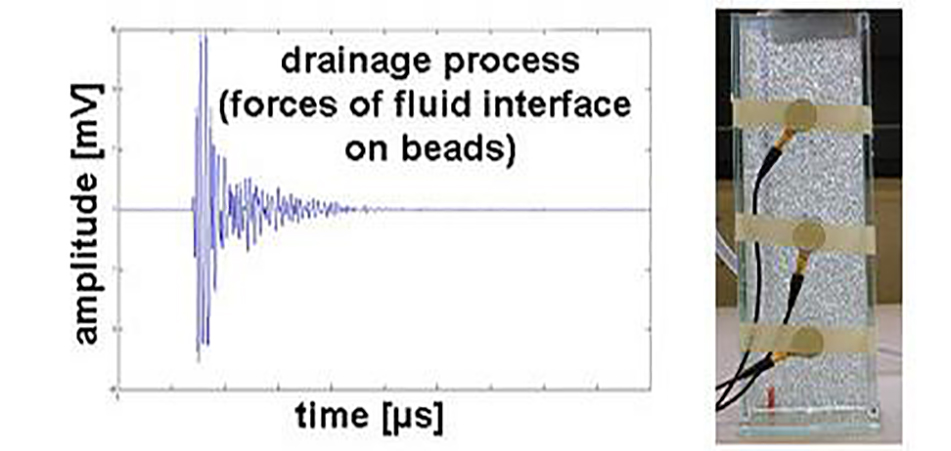Hydrologic and geomporphic factors determining landslide patterns
Landslide events occurring after intense rainfall cause damages for life, habitats and infrastructure. The most recent events affecting several regions in Switzerland occurred in summer 2005 and caused damages in the range of about 3 billion Swiss Francs (Ereignisanalyse Hochwasser 2005; Teil 1 : Prozesse, Schäden und erste Einordnung Editors: Gian Reto Bezzola, Christoph Hegg; Department of the Environment, Transport, Energy and Communications, BAFU and Swiss Federal Institute for Forest, Snow and Landscape Research WSL, 2007).

Figure 1: Picture from the report ' Ereignisanalyse Hochwasser 2005' on page 201, landslide at 'Laugneri', close to Weggis, Lucerne, Switzerland.
The landslide events are very difficult to predict due to the heterogeneity of the system and the uncertainty with respect to the controlling triggering mechanisms. For that reason no warning-system is established. In course of a four year project of the Competence Centre Environment and Sustainability (http://www.cces.ethz.ch/projects/tramm) various groups from EPFL, ETHZ and WSL will collaborate to improve the predictability of landslide events. The research at STEP will address the following questions:
Are internal relaxation mechanisms (of water and load) responsible for the triggering of landslide events?

Figure 2: The occurrence of rapid mass release is very difficult to predict because similar input events (amount of rainstorm) can produce very different output (storage and runoff of water or a catastrophic landslide event). The concept of Self-Organized Criticality (SOC) provides a framework to characterize such events. The system consists of many cells with well-defined capacities. As soon as the capacity of one cell is exceeded, the contents of this cell are redistributed. This relaxation can evoke a cascade of other redistribution processes in other cells. In the Figure above, a modified version of the classical sand pile example is shown. For almost the same initial conditions, the addition of one sand grain can cause relaxation in a different numbers of cells (cells with a relaxation are indicated with a higher level).

Figure 3: Other application of SOC. In the left Figure, the cells in a 3D-sandpile model that are affected by the addition of one mass element are shown in red. Due to the addition of a single mass element, a perturbation can cross the whole system. In the right Figure, the hillslope is modeled as a network of bonds. Each bond consists of 1000 fibers. With increasing load, some fibers break and the load must be redistributed. Intact bonds are shown in black, destroyed bonds in red and bonds with several broken fibers in green.
What is the effect of plant roots on the stability of hillslopes and the triggering of landslides?

Figure 4 : Simple model of root distribution. For each plant (a disk in the left Figure), the root density decreases with the squared distance from the centre. The resulting root density is shown in the right Figure with high density indicated by a high gray value.
Can the triggering and the onset of a landslide be detected by measuring acoustic emissions related to fractures in the soil matrix and the breaking of plant roots?

Figure 5: Application of acoustic emission: At the left side, the amplitude of the acoustic signal during the drainage of a water saturated glass bead column (right Figure) is shown. When the interface between the fluid and the air crosses a glass particle, energy is released and can be detected. The acoustic emissions were measured with the three sensors shown in the right Figure.
Team: Peter Lehmann, Dani Or and Andreas Papritz
Funding: SNSF
Contact: